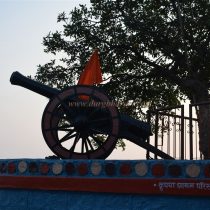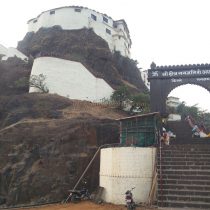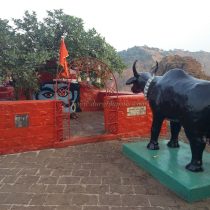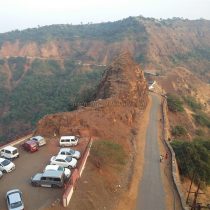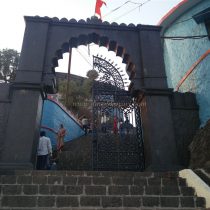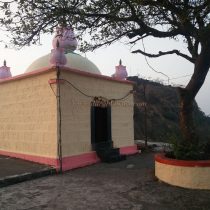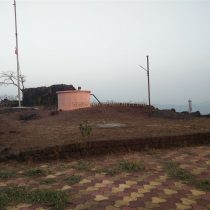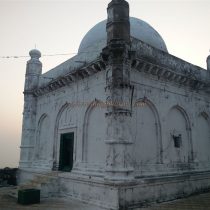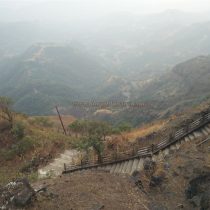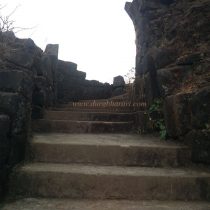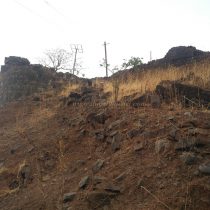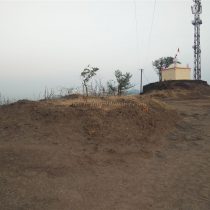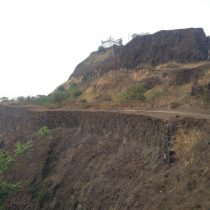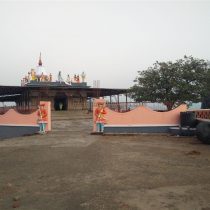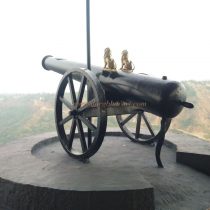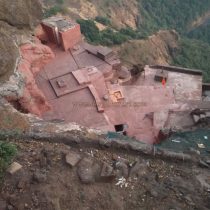GAGANGAD
TYPE : HILL FORT
DISTRICT : KOLHAPUR
HEIGHT : 2110 FEET
GRADE : EASY
Gaganbawda is known as a place of the cool flow of air in the Kolhapur district. Trekkers are familiar with the Gagangad fort near this village. Karul Ghat and Bhuibawda Ghat are two ancient wharves that descend from Karveer province to Konkan. Goods unloaded at Konkan ports used to reach Desh through these wharf routes. To protect these two wharves, the Gagangad fort was built in the 12th century on a hill in the Sahyadri range. Today, this fort is famous for Shri Gagangiri Maharaj of Nath Sampraday. Due to Gagangiri Maharaj's monastery, devotees visit the fort and are allowed to enter the fort from 5 am to 9 pm. Gaganbawda is the main village of the taluka at the foot of the fort and is at a distance of 55 km from Kolhapur. There is a 2 km paved road from Bavda village to the foot of Gagangad by private vehicle and this road takes you to half the height of the fort.
...
In the past, there was a way to reach the fort from Taliwadi in Bhuibawda village by a steep climb. Steps have been built to reach the fort from the parking lot. At the beginning of the steps is the temple of Mhasoba and in front of it is the statue of bison. From here you can see the bastion of the fort on the upper side. After 10 minutes of climbing the steps, you reach the gate of the fort. Only the remains of the original gate on the fort remain and the committee of the monastery has built a new gate here. Upon entering through the door, there is a big cannon placed on the left side of a quadrangle structure, and in front, there is a large natural cave. Since Gagangiri Maharaj lived in this cave, his temple has been built in the cave. A small cannon can be seen in a corner of the cave. Images of many deities are carved on the outer rock of the cave. Photography is prohibited in this area. On the right side of the steps is the monastery office and in the next part is the Bhaktanivas. After seeing the cave and climbing the steps, we come to the open plateau at the top of the cave. There is a temple of Gagangiri Maharaj in the upper part of the cave on this plateau and in the bastion behind this temple, there are cannons placed on two carts at both ends. Looking down from this part of the temple to the right of the cave, one can see another cave and a water cistern carved in the rock. The equestrian statue of Gagangiri Maharaj is erected on the temple premises and the entire structure of the fort can be seen from this place. The steep hill of the fort is spread over about ten acres from east-west, and the fort is divided into two parts, Machi and the citadel. The height of the fort is 2090 feet above sea level. From here, you can see the citadel of the fort and the Gahininath Samadhi building on it. There is a small temple of Lord Shiva on the hill on the way to the citadel. The path to the left of this temple leads to the bastion at the other end of the plateau, while the path to the right leads to the citadel. On the way to the bastion at the end of the plateau, one can see the ramparts of the fort and a lake on the way. Numerous deep valleys descending into the Konkan, Bhuibawda village and Karul village on the left are visible from this bastion at the top. After returning from here, come to the temple and take the path on the right towards the citadel. While walking along this road, one can see the quadrangle structures of some buildings and the ramparts of the citadel. At the top of the newly built stairway are two bastions in the ramparts and at the end of the stairs is a ruined arch of a door. From this arch, you enter the citadel. The bastions near the gates have collapsed. There is a Samadhi of Gahininath, which looks like a Mosque in front of it and there is a temple of Goddess Vitthalai next to it. Adjacent to the temple is a large well for supplying water to the fort. Apart from this, there are a large number of architectural remains on the citadel, and a bastion with a flagpole can be seen. To complete the fort round you need to have at least one and a half hours. To feel the history of this fort, one must visit Gagangad at least once. Fifteen forts were built between 1178 and 1209 during the reign of Shilahar king Bhoj (II) in southern Maharashtra. Later in 1209, Sindhandev Yadav defeated Bhoj Raja and brought this part under Yadav's control. After the fall of Devagiri in 1310 AD, the fort came under the rule of Delhi, and later the Bahamani came under its rule. After the conquest of the Bahamani kingdom, the fort went to Adilshah. Being close to Kolhapur and an important fort on the Konkan route, this fort was also important for defense and trade. In 1658, Shivaji Maharaj conquered this fort from Bijapurkar and repaired it. Later, Rajaram Maharaj appointed Ramchandra Pant Amatya as the Chief of Gagangad fort and Gagangbawda. Fort keepers of Gagangad and Samangad forts joined the rebellion against the British in Kolhapur in 1844. The British destroyed the ramparts of this fort with cannons.
© Suresh Nimbalkar

